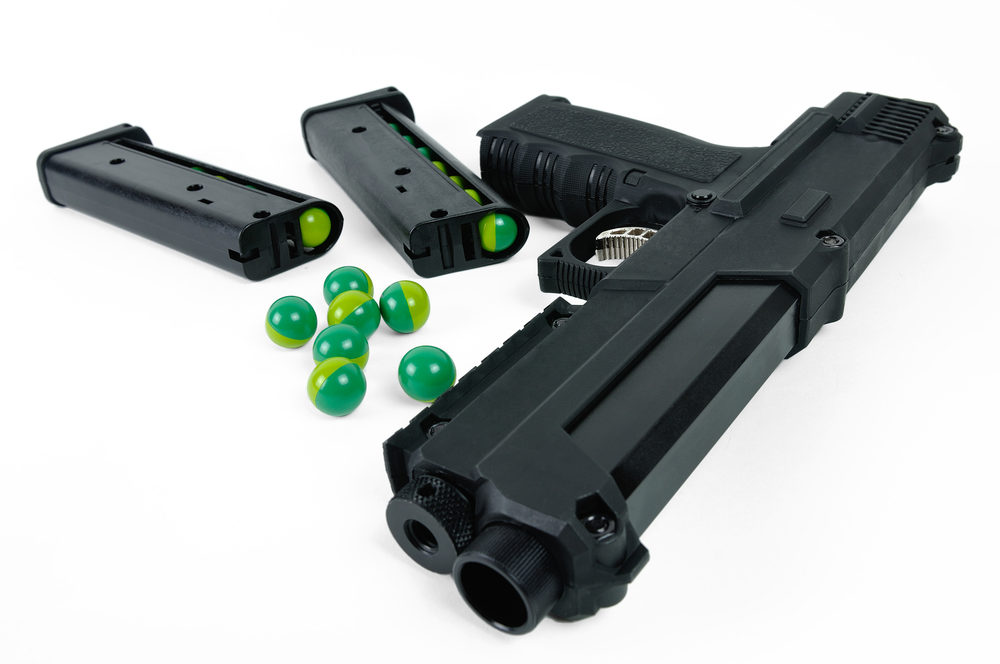Child Eye Injuries From BB, Air, And Paintball Guns Increasing: Study

An increasing number of children are suffering severe eye injuries from popular recreational guns, such as paintball guns, air guns and BB guns, according to the findings of new research.
In the April issue of the Journal of the American Association for Pediatric Ophthalmology and Strabismus, researchers from Stanford University School of Medicine indicate that the rates of eye injuries from non-powder guns increased 511% between 2002 and 2012.
Researchers analyzed data from U.S. Emergency rooms compiled by the U.S. Consumer Product Safety Commission (CPSC) on pediatric eye injuries between 2002 and 2012, identifying more than 3,000 children treated in U.S. emergency rooms (ERs) for non-powder gun-related eye injuries in 2012.

Did You Know?
Millions of Philips CPAP Machines Recalled
Philips DreamStation, CPAP and BiPAP machines sold in recent years may pose a risk of cancer, lung damage and other injuries.
Learn MoreIn addition to the skyrocketing rate of injuries, hospital admissions for eye injuries related to non-powder guns increased by over 600% during the same time period.
Data from the National Electronic Injury Surveillance System was used, including 400 individual case reports involving airsoft, paintball and BB gun injuries. Many of these cases reported users were not wearing eye protection.
Non-powder guns are designed for recreational use and do not involve gunpowder to fire; instead the guns use compressed air, springs and other methods to propel projectiles at high speed. Researchers focused on air guns, also known as airsoft guns, which fire plastic bullets, BB guns, paintball guns and pellet guns.
Eye injuries from these types of guns increased dramatically over the 10-year study period. Over 98% of these injuries occurred when the user was not wearing eye protection.
“Air guns are rising in popularity and now account for the majority of pediatric eye injuries requiring hospital admissions,” said Dr. Douglas Frederick, lead author of the study and clinical professor of ophthalmology at Stanford University. “These eye injuries occur without ocular protection and may lead to permanent eye injury.”
Roughly 28% of documented cases of airsoft or BB gun-related injuries affected the user’s vision, causing eyesight worse than 20/50 after their initial treatment.
Stanford researchers also found children sustaining eye injuries due to air guns are more likely to be diagnosed and admitted with an ocular puncture injury, where something punctures the eye, or where a foreign body affects the eye.
Manufacturer Sales Restrictions Failing
Many strategies were implemented by BB gun manufacturers in the early 2000s to restrict sales and marketing campaigns of these popular guns directed at minors. Despite the strategies, the popularity of the guns continued to rise, while eye injuries in children also increased.
Currently, the federal government does not regulate the sale of non-powder guns, yet 22 states restrict ownership and use of the guns. Four states in the U.S. consider these types of guns as firearms, three states consider them dangerous weapons; however in most states children are allowed to buy and own these products.
Researchers are calling for stricter regulations of these types of guns, as well as for greater usage of eye protection to help combat this growing trend of injuries. They are also calling for eye safety mandates among all air gun users, and say changes to state policy to regulate possession and usage of the guns among children may be needed.
Get more articles like this sent directly to your inbox.
"*" indicates required fields




0 Comments